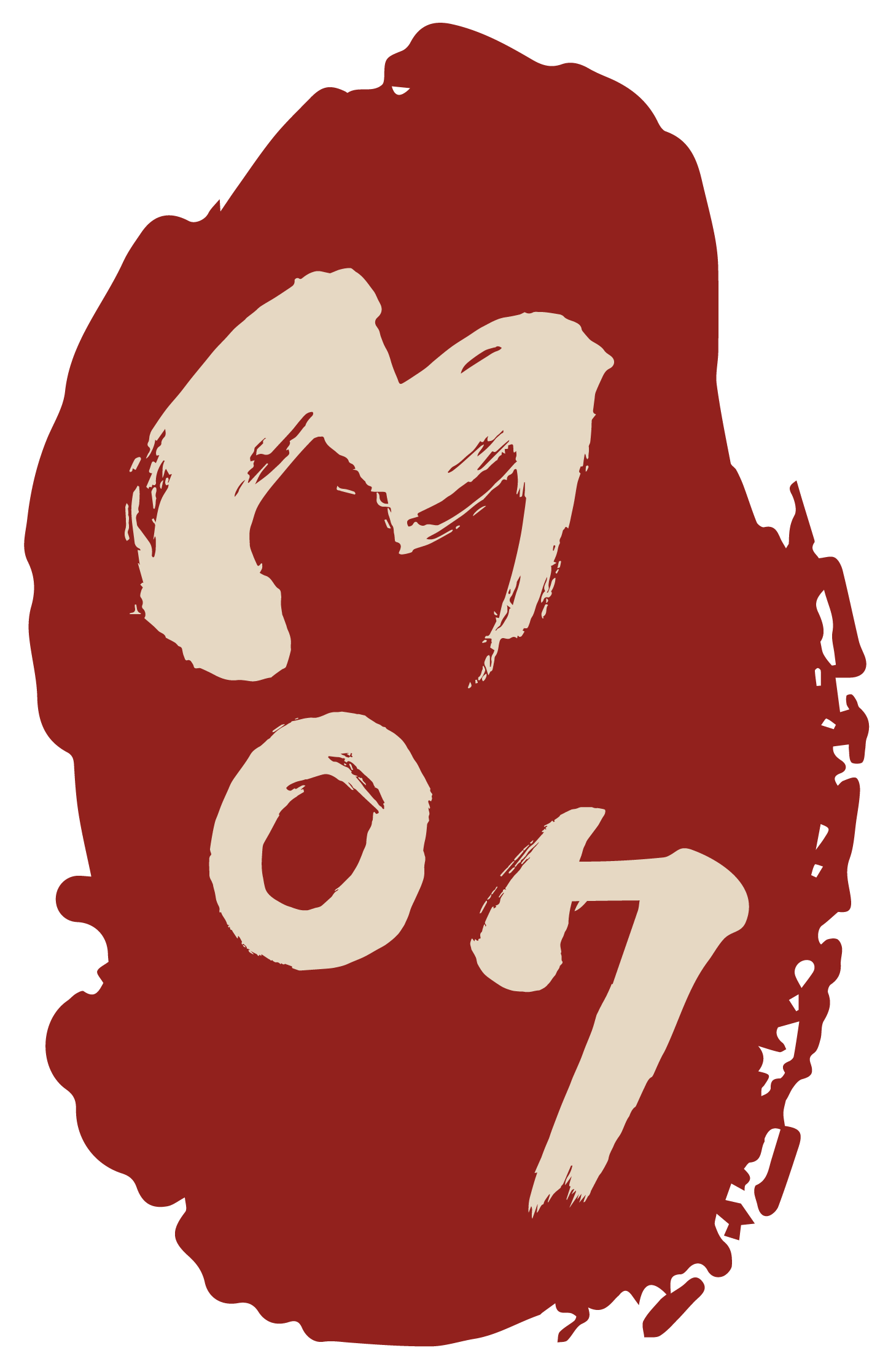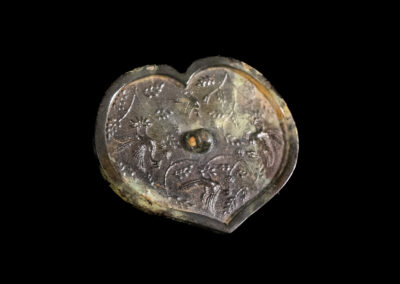Heart-shaped Mirror
Bronze mirror
Mirror in the shape of a heart. Solid smooth wide edge. Phoenixes as highlights of decoration.
Object ID
Tang_010
Age
Tang Dynasty (618 – 907 AD),
8th/9th century
Material
Bronze
Color
Bronze-colored
Width
10.9 cm
Height
9.1 cm
Condition
good
Price
on request
Description
Already in the Ancient China the heart was considered as to be the seat of the feelings and life. Sometimes mirrors were elaborated in the form of a heart. The presentation of phoenixes in the Tang-Dynasty, 8th century or 9th century AD, are rather frequent in the decoration of mirrors. They are bringers of good fortune. [1] In this case a rather solid frame surrounds beautiful motives: As very usual in the late Tang-Dynasty mirrors, animals and plants or flowers are combined in a beautiful way. On this item each of the phoenixes is placed on the top of a flower – flying, starting, standing or singing. Nevertheless, the Chinese phoenix is very different from European ones although it came also into existence by mythological thinking. A very interesting comment developing from the 4th century BC that the male phoenix, the female unicorn and five other magical creatures – the green drake, the red bird, the white tiger, the tortoise and the dark warrior – are definitely signs that the country/state is governed by a good emperor. Already Kung-fu-tse had complained that the phoenix would no longer appear because the state was reigned by an incompetent emperor. Originally, the male phoenix was estimated as a god of wind. Its body symbolizes human qualities: the head is the seat of the virtue, both of the wings the responsibility, the back the right behavior, the thoracic means the humanity and the bally the reliability. Maybe, in this case the phoenixes are combined with peonies, which symbolize happy couples just married. In this concern the heart-form would represent the love. [2] An old Chinese proverb says: “The mirror is the heart of a wise human being.” [3] (HV)
________________________
[1] Watson, William (1973): The Genius of China. An exhibition of archaeologial finds of the People’s Republic of China. Times Newspapers Ltd. 144 (figure 302)
[2] Eberhard, Wolfram (1983): Lexikon chinesischer Symbole. Geheime Sinnbilder in Kunst und Literatur, Leben und Denken der Chinesen. Eugen Diederichs Verlag. 227-229
[3] Schwarz, Ernst (1996): Der Spiegel ist des Weisen Herz. Sinnsprüche aus dem Alten China. Titel. Kösel Verlag. München. Titelseite




